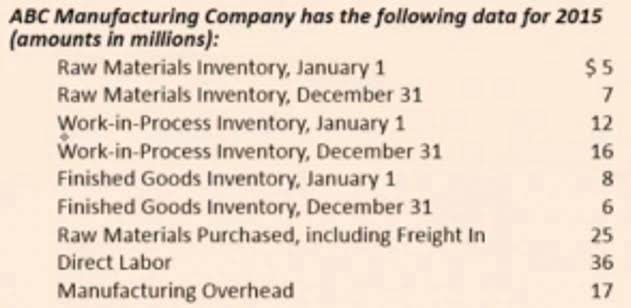The lower of cost or market method or rule assigns value to inventory at either the price it cost to acquire the inventory or the inventory’s current market value. The weighted https://www.bookstime.com/articles/present-value-of-a-single-amount average inventory costing method is beautiful in its simplicity. And the cost of goods available for sale is that average unit cost multiplied by the ending inventory.
- Due to inflation over time, inventory acquired more recently typically costs more than older inventory.
- This method aims to ensure that the inventory value is as close as possible to the price of the purchased items.
- You can use our online FIFO calculator and play with the number of products you sold to determine your COGS.
- This can be done by multiplying the number of units sold during a given period by their purchase price or production cost.
- Those are the ones that COGS considers first; thus, resulting in lower COGS and higher ending inventory.
Basics of LIFO and FIFO Inventory Accounting Methods

The FIFO inventory method assumes that the oldest goods purchased are the first to leave the company as sales occur. When the cost of inventory is rising, FIFO will ensure that the older, less expensive inventory cost is transferred to Cost of Goods Sold. This creates a lower expense on the income statement and higher profit.

Everything You Need To Build Your Accounting Skills

The FIFO method avoids obsolescence by selling the oldest inventory items first and maintaining the newest items in inventory. FIFO is an inventory valuation method that stands for First In, First Out. As an accounting practice, it assumes that the first products a company purchases are the first ones it sells. FIFO is also the most accurate method for reflecting the actual flow of inventory for most businesses.
How Does LIFO Work?
Inventory accounting is only one part of a company’s management of its inventory investment, but an important one. Another option is the weighted average cost method, where each unit’s cost equals the total cost divided by the number of units available. It provides an accurate fifo inventory method formula representation of costs across all inventory items but can become complicated if production costs vary significantly over time. FIFO, or First In, Fast Out, is a common inventory valuation method that assumes the products purchased first are the first ones sold.
The materials used in a job or process are charged at the price of their original purchase. In other words, under FIFO, the cost of materials is charged to production in the order of purchases. It’s the amount that a company’s taxable income is deferred with the LIFO system. On 31st December 2016, 600 units are on hand according to physical count. With the help of above inventory card, we can easily compute the cost of goods sold and ending inventory. Notice how DIO would increase because of higher inventory and lower COGS, which is precisely what happens when we use the FIFO method during an inflationary period.
- This method assumes that inventory purchased or manufactured first is sold first and newer inventory remains unsold.
- The wonderful thing about FIFO is that the calculations are the same for both periodic and perpetual inventory systems because we are always taking the cost for the oldest units.
- For example, Apple’s (AAPL) Form 10-K shows that this company uses the first-in, first-out method.
- Whether you need an eagle eye into the hundreds of items you sell or if you just want to stay on top of your stock, there’s an inventory management solution that’s right for you.
- When you send us a lot item, it will not be sold with other non-lot items, or other lots of the same SKU.
How does inflation affect FIFO ending inventory calculation?


- But when it was time to replenish inventory, her supplier had already increased their prices.
- This means that the products in your inventory are less likely to expire before they can be sold, which helps reduce waste.
- It provides an accurate representation of costs across all inventory items but can become complicated if production costs vary significantly over time.
- This includes food production companies as well as companies like clothing retailers or technology product retailers whose inventory value depends upon trends.
- In this way, FIFO matches sales to the oldest costs first, resulting in the most recent costs being used to value ending inventory.
- As the price of labor and raw materials changes, the production costs for a product can fluctuate.

 When Time Got Louder
When Time Got Louder Spinning Out (2020)
Spinning Out (2020)